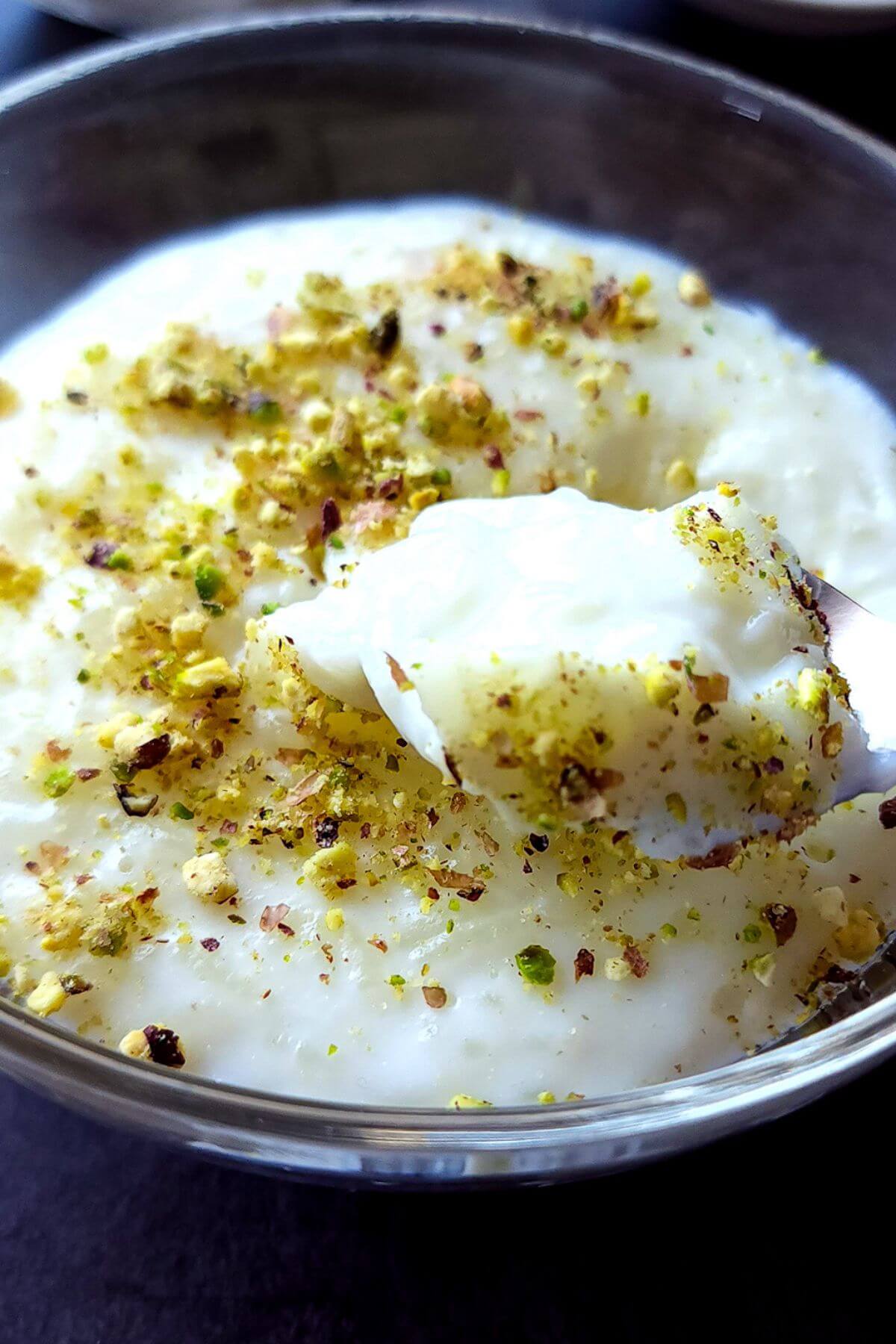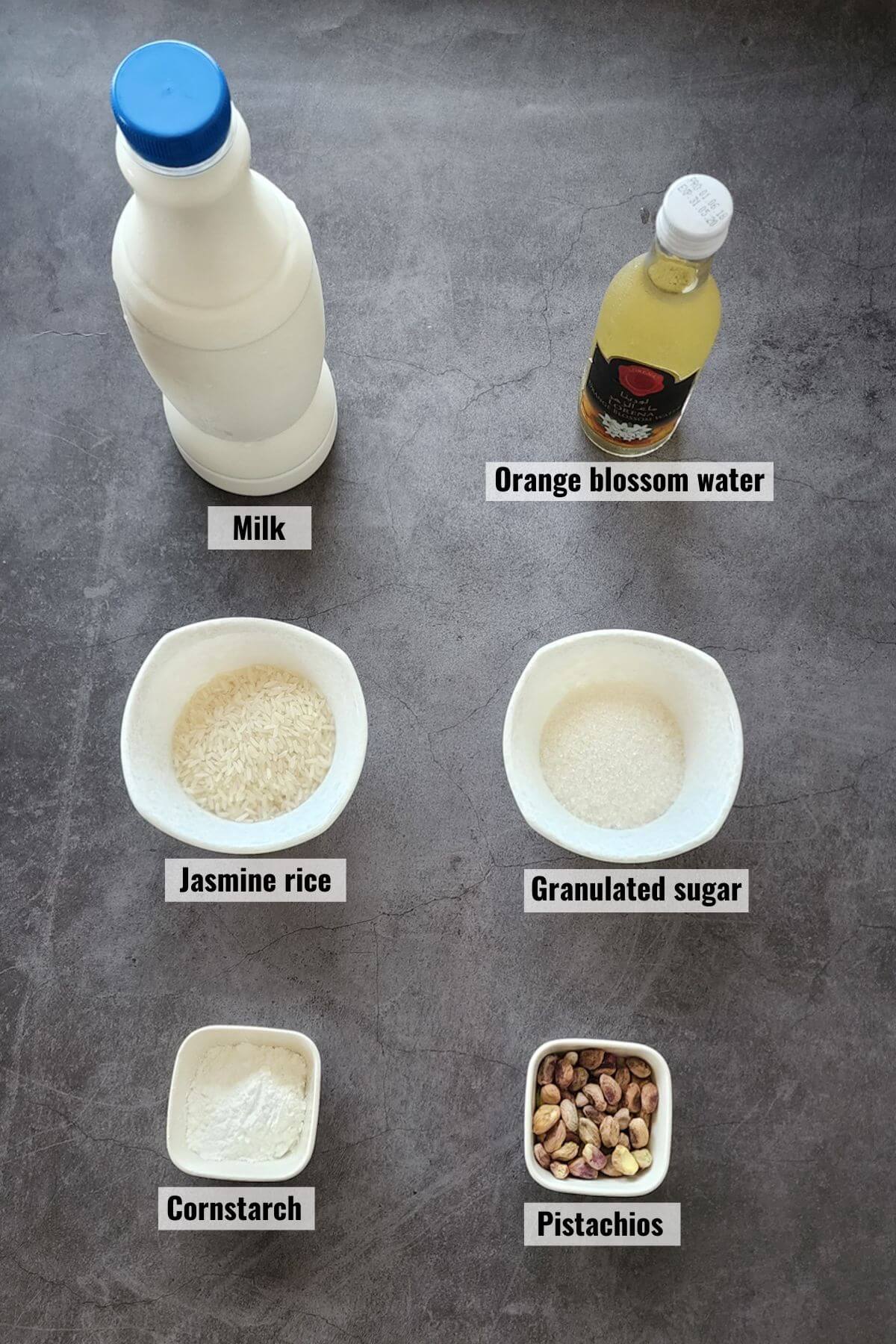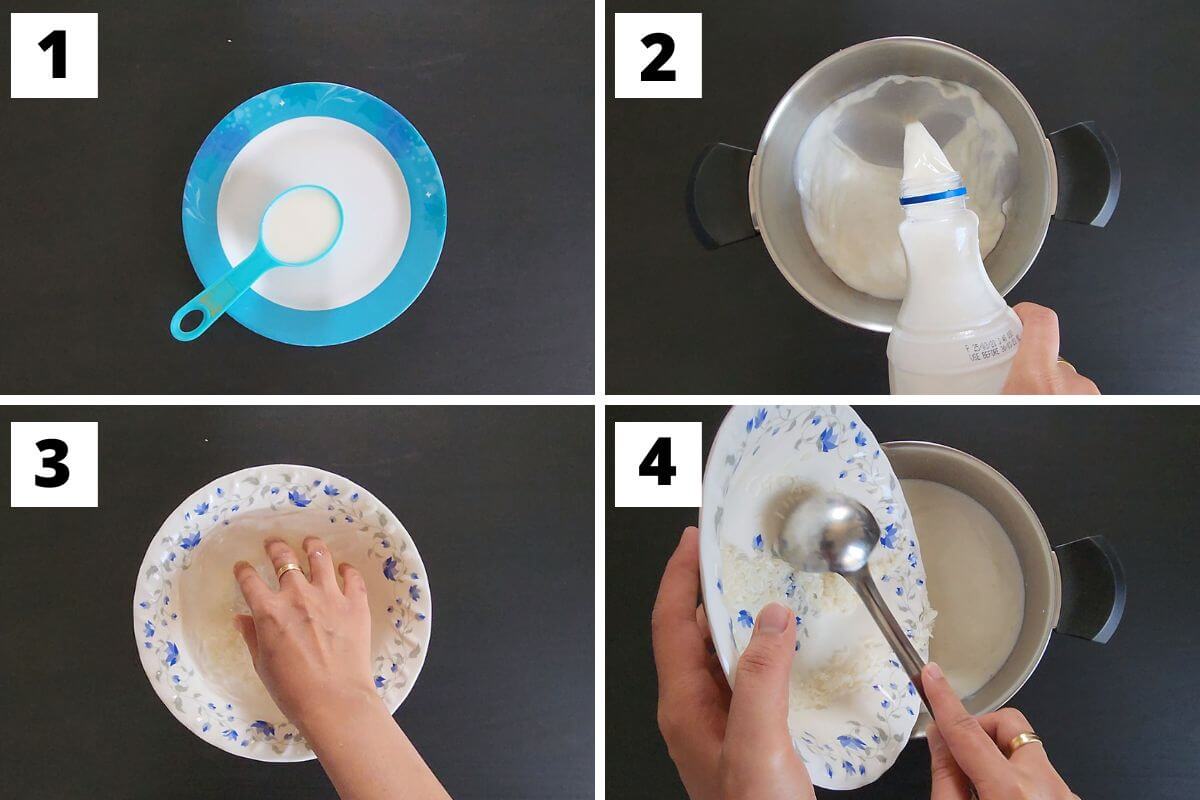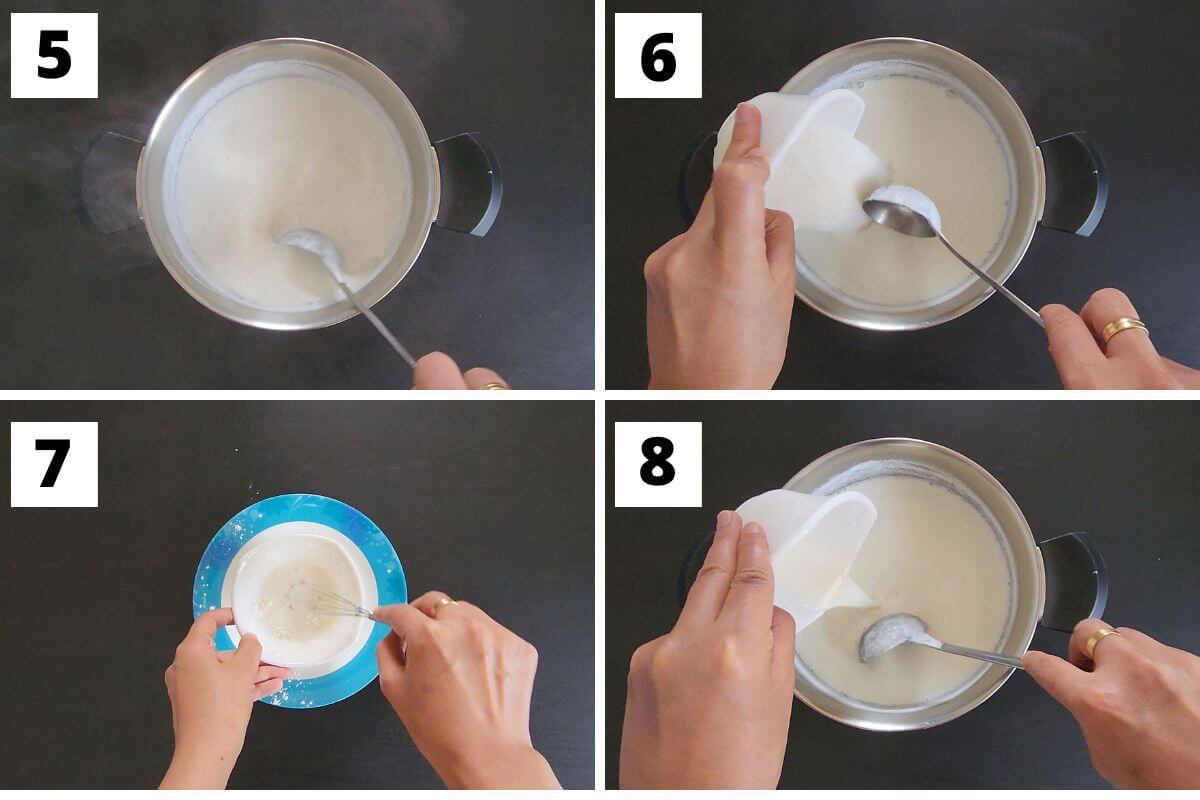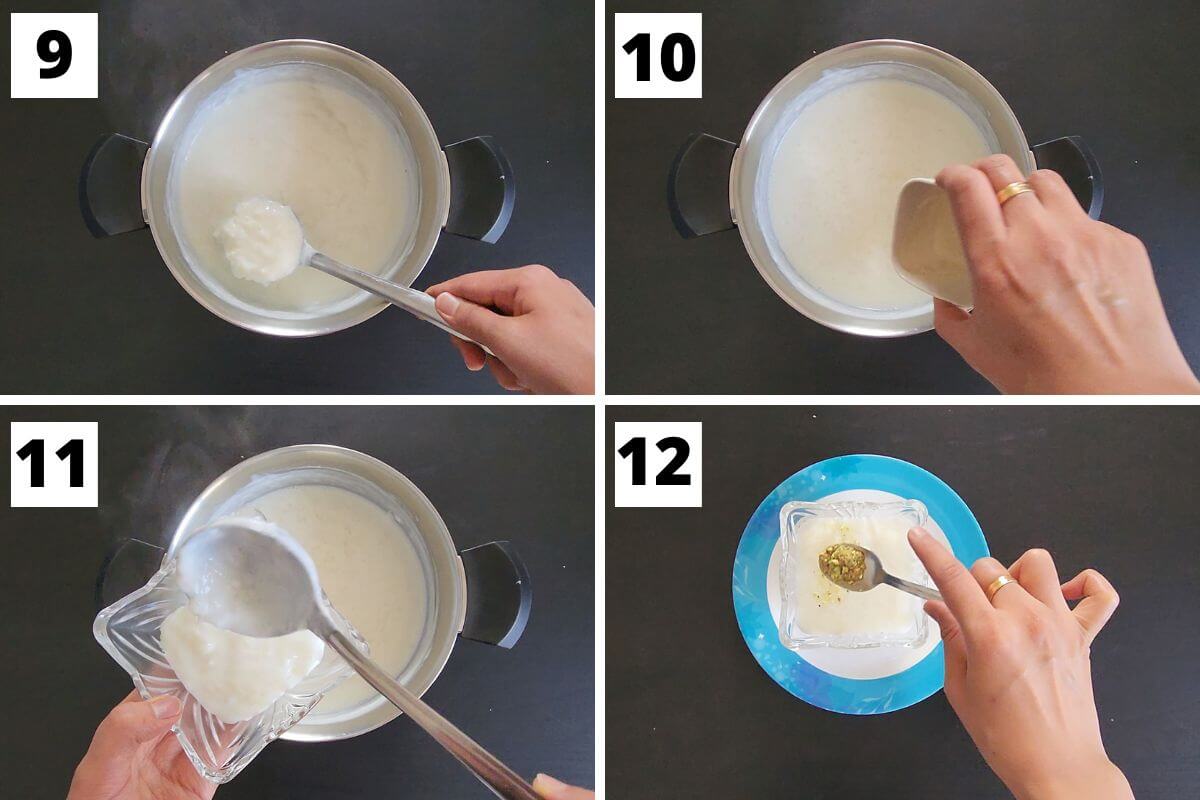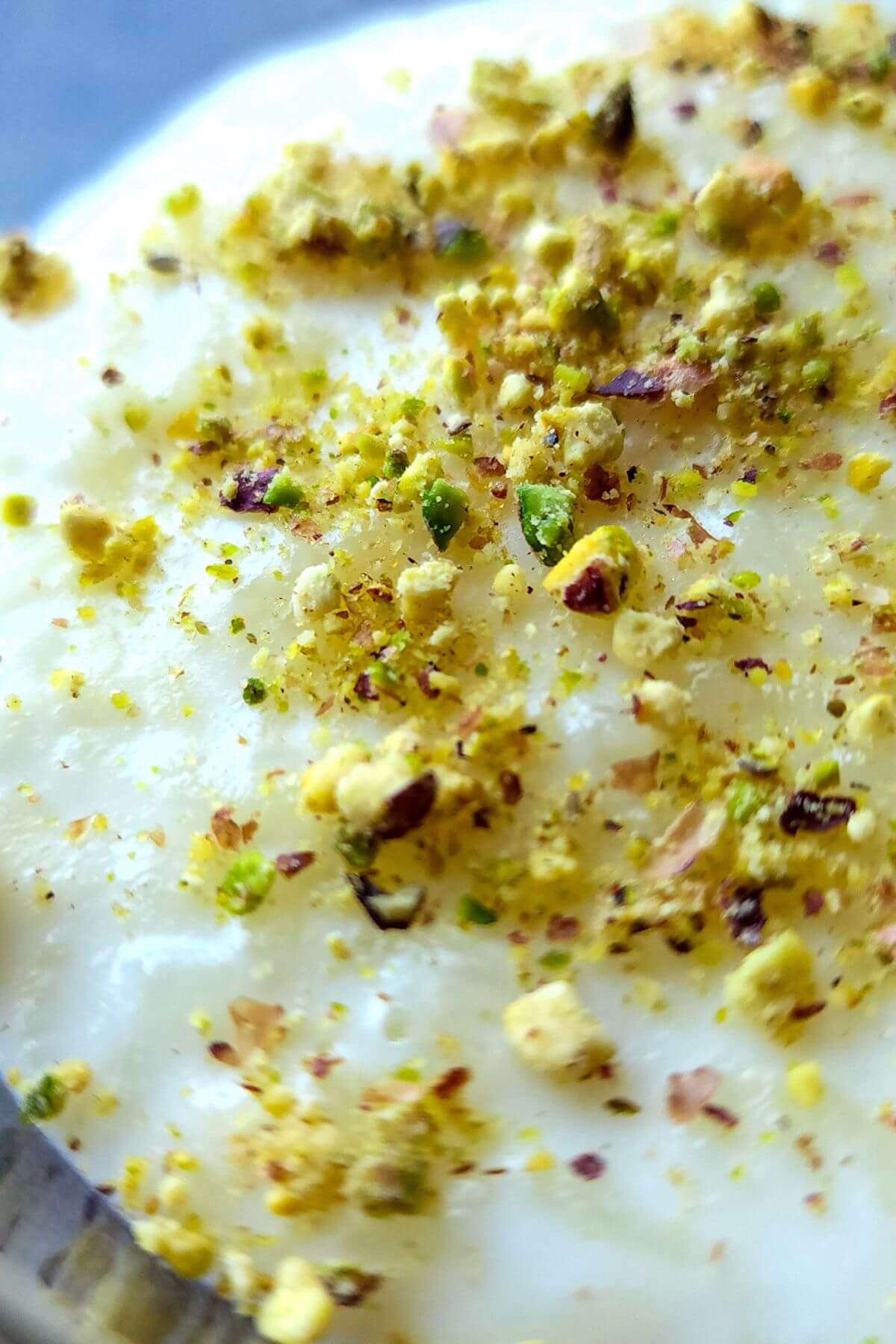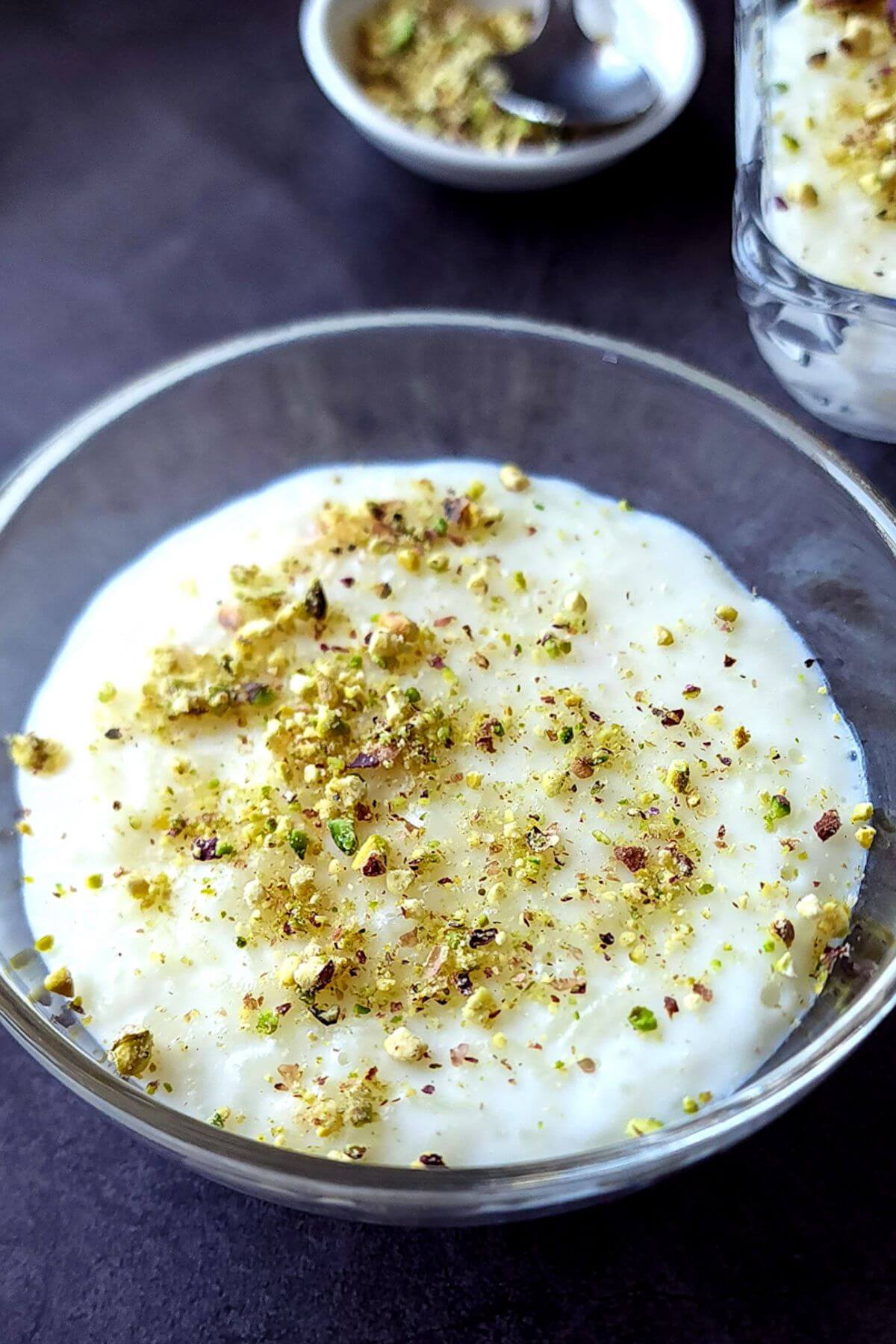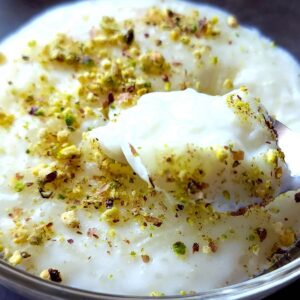Rice pudding is a universal dessert as almost every country has one recipe of its own. The Indian kheer is my favorite rice pudding as it’s the first and most frequently eaten rice pudding by me. Nevertheless, I also love exploring and trying different rice pudding recipes from around the world like this Greek rice pudding called rizogalo. It really amazes me how despite having common main ingredients – milk and rice, how unique they all taste. Today’s recipe – Riz bi Haleeb is a very popular rice pudding from Lebanon. The literal meaning of Riz bi Haleeb is Rice in Milk. This dish is quite similar to Indian rice kheer and many believe that riz bi haleeb got originated from kheer only. However, some minor changes in the kheer recipe give it a very distinct flavor.
Riz bi haleeb is a rice pudding from the Middle East whereas kheer is a rice pudding from the Indian subcontinent. Unlike kheer which gets a thick and creamy consistency after patiently cooking it over a low flame, Riz bi Haleeb is thickened by adding cornstarch slurry to it. Another ingredient that makes Riz bi Haleeb unique is the mild essence and flavor of orange blossom water which is used in many Middle Eastern recipes. Kheer is generally flavored with green cardamom or saffron. In kheer dried fruits and nuts are cooked with rice in milk whereas Riz bi haleeb is garnished with crushed nuts.
Ingredient notes and substitute suggestions
Milk: Use full cream milk for a creamier and richer pudding. Vegans may use plant-based milk too. Orange blossom water: It’s the by-product of the distillation process of bitter orange blossoms (neroli) for extracting essential oil. Orange blossom water is used to flavor a lot of Middle Eastern and Mediterranean dishes mainly desserts and drinks. It has a very unique flavor that is hard to create with any other ingredient. It doesn’t taste like orange so don’t replace it with orange essence or orange zest. Some people also flavor Lebanese rice pudding with rose water. You can also use that. However, I feel that Riz bi haleeb flavored with orange blossom water tastes better. Rice: Use jasmine rice or any fragrant rice variety with medium-sized rice grains. Though not the best choice for this recipe, you can use basmati rice too but don’t use basmati rice with very long grains. Long-grain basmati rice won’t give you a very creamy pudding. Cornstarch: It’s used to thicken the pudding. Pistachios: Generally pistachios are used to garnish this Arabic rice pudding. The contrasting green color with white pudding makes it more appealing. But you can use any nut of choice. You can skip the nuts too.
Serving tips
You can enjoy Riz bi haleeb hot, warm, at room temperature, or chilled. But it tastes best if served chilled. Step 2: Put the remaining milk in a cooking pot and boil it once. Step 3: Rinse rice well and drain the water. Step 4: Add rinsed rice to the boiling milk. Step 5: Cook rice in milk for around 25 minutes or until rice is nicely cooked (overcooked). Overcooked rice will make the pudding more creamy. Step 6: Add sugar and mix. Cook for 1-2 minutes or until the sugar gets dissolved. Step 7: In a bowl mix cornstarch with the ¼ cup of milk taken out in step 1. Whisk until you get a smooth paste. Make sure the milk is at room temperature. Step 8: Add cornstarch slurry to the pudding, stirring continuously. Step 9: Cook for a few minutes or until the pudding thickens and becomes creamy. Step 10: Add orange blossom water and mix. Switch off the stove. Step 11: Transfer the pudding to serving bowls. Leave the pudding for a few minutes i.e. until it sets. Step 12: Garnish with crushed unsalted pistachios. Your delicious Middle Eastern rice pudding-Riz bi Haleeb is ready to be enjoyed.
How to store the leftover?
Allow the leftover rice pudding to reach room temperature and then transfer it to an airtight container. Refrigerate and consume within 3 days. When allowing the pudding to reach room temperature, don’t leave it outside the fridge for more than an hour. Dairy products get spoiled very fast.
Recipe tips and tricks
Jasmine rice or any rice variety with medium and fragrant grains can be used to make this pudding. You can use basmati rice too but jasmine rice will give a better result in this recipe as it’s more starchy, it makes the pudding creamier. Make sure the milk in which you mix cornstarch is at room temperature. Keep stirring the pudding continuously after adding the cornstarch slurry to avoid lump formation. If you can’t find orange blossom water, use rose water. They taste completely different but both make the pudding delicious. However, if both ingredients are available to you, use orange blossom water, it gives a better result. Instead of pistachios, you can use any nut of choice to garnish this Lebanese rice pudding.
Frequently asked questions
Vegan tip: If you are a vegan and want to make a vegan version of this dish, just use any plant-based milk to make Riz bi Haleeb. All the other ingredients in this recipe are vegan-friendly. If you liked this recipe, please leave a star rating ⭐⭐⭐⭐⭐ in the recipe card below. You can also follow me on Instagram, Youtube, and Pinterest.
Recipe

